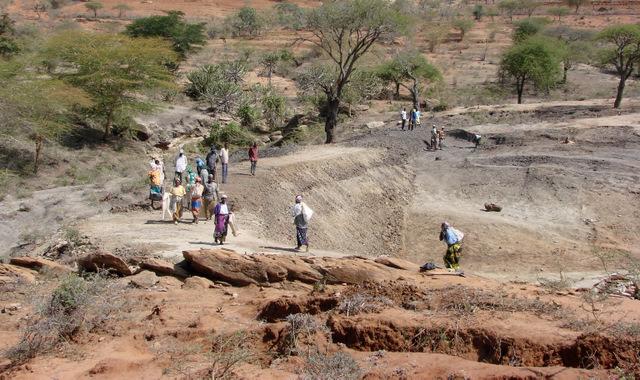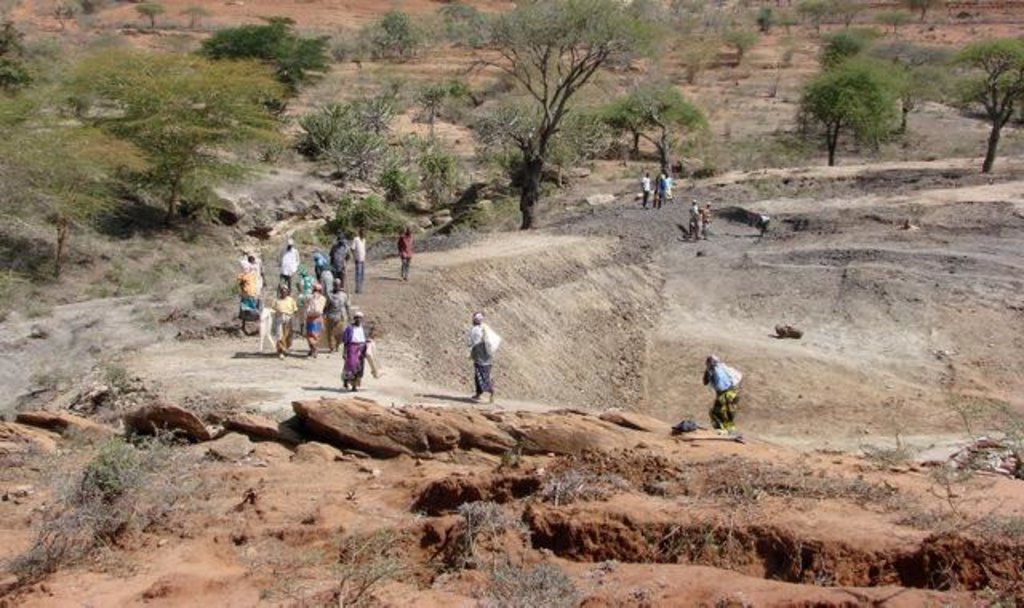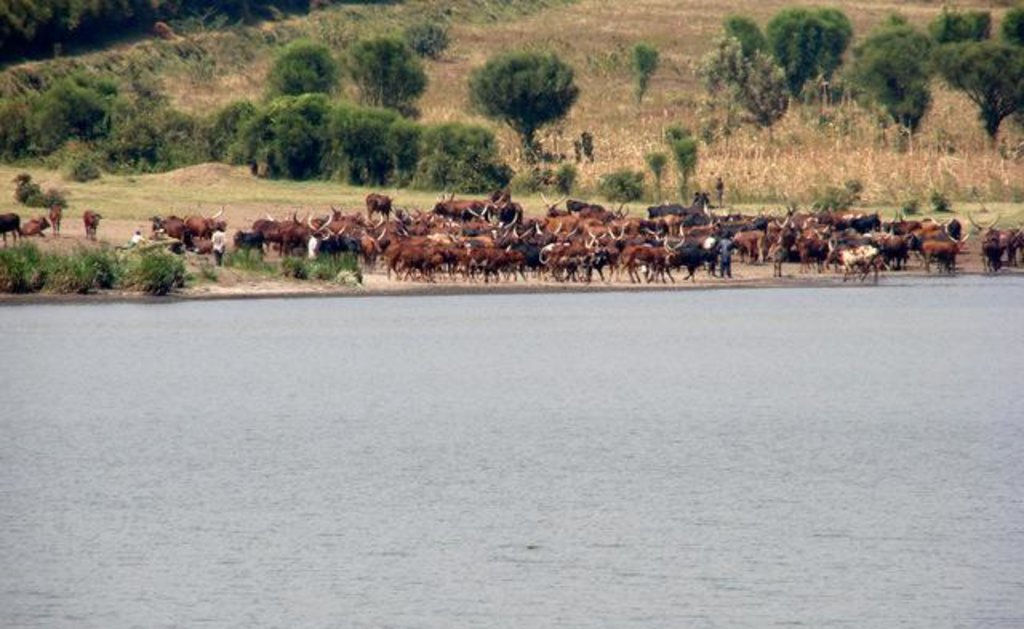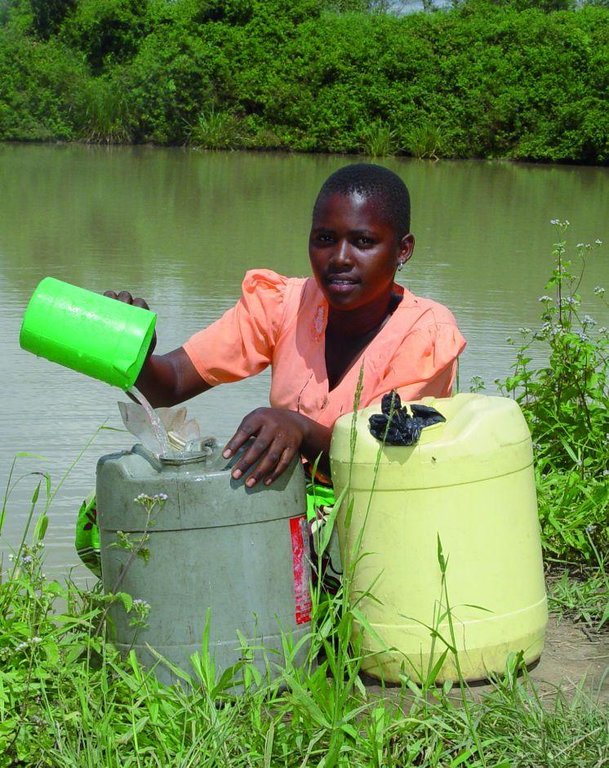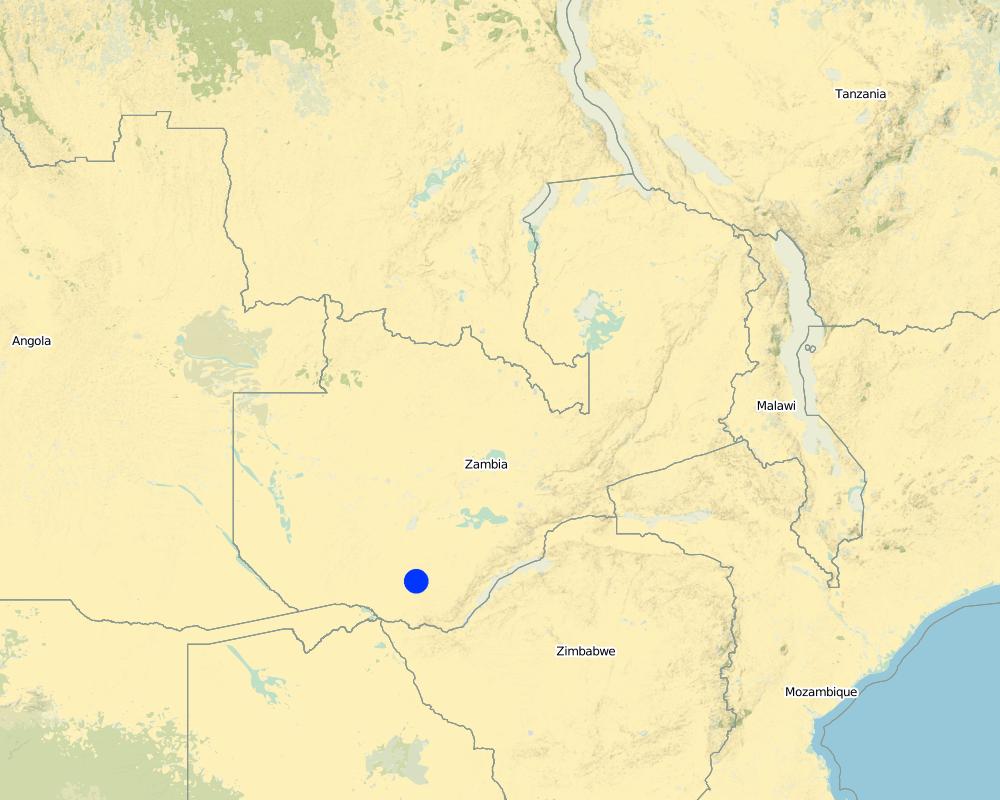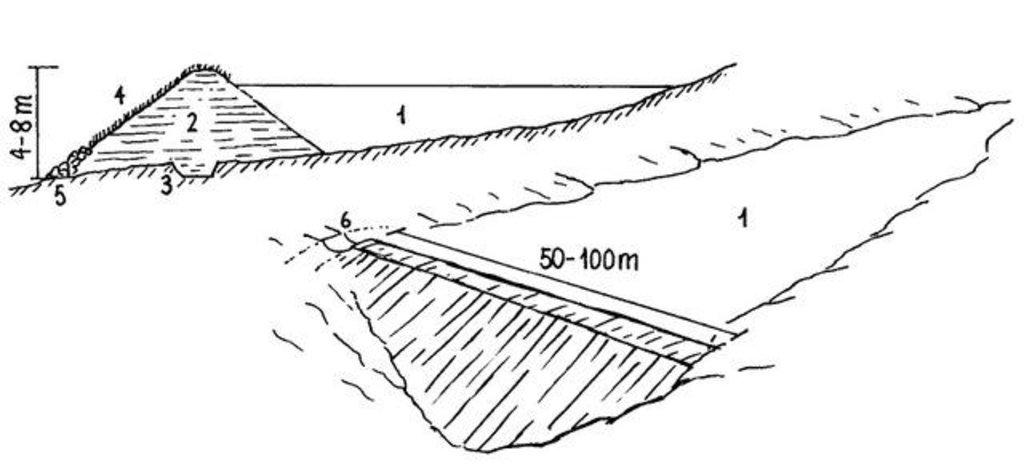Small Earth Dams [Zambia]
- Creation:
- Update:
- Compiler: MAIMBO MALESU
- Editor: –
- Reviewer: David Streiff
technologies_1331 - Zambia
View sections
Expand all Collapse all1. General information
1.2 Contact details of resource persons and institutions involved in the assessment and documentation of the Technology
Name of the institution(s) which facilitated the documentation/ evaluation of the Technology (if relevant)
International Centre for Research in Agroforestry (ICRAF) - Kenya1.3 Conditions regarding the use of data documented through WOCAT
The compiler and key resource person(s) accept the conditions regarding the use of data documented through WOCAT:
Ja
2. Description of the SLM Technology
2.1 Short description of the Technology
Definition of the Technology:
Water harvesting and storage structures to impound runoff generated from upstream catchment areas.
2.2 Detailed description of the Technology
Description:
Small earth dams are water harvesting storage structures, constructed across narrow sections of valleys, to impound runoff generated from upstream catchment areas.
Establishment / maintenance activities and inputs: Construction of the dam wall begins with excavation of a core trench along the length of the dam wall which is filled with clay and compacted to form a ‘central core’ that anchors the wall and prevents or minimizes seepage. The upstream and downstream embankments are also built using soil with a 20-30% clay content. During construction – either by human labour, animal draught or machine (bulldozer, compacter, grader etc.) – it is critical to ensure good compaction for stability of the wall. It is common to plant Kikuyu grass (Pennisetum clandestinum) to prevent erosion of the embankment. The dam is fenced with barbed wire to prevent livestock from eroding the wall. Typical length of the embankment is 50-100 m with water depth ranging 4-8 m. An emergency spillway (vegetated or a concrete shute) is provided on either, or both sides, of the wall for safe disposal of excess water above the full supply level. The dam water has a maximum throwback of 500 m, with a capacity ranging from 50,000 – 100,000 m3.
Natural / human environment: The dams are mainly used for domestic consumption, irrigation or for watering livestock. If the dams are located on communal lands, their establishment requires full consultation and involvement of the local community. The government provides technical and financial assistance for design, construction and management of these infrastructures. Community contribution includes land, labour and local resources. The community carries out periodic maintenance of the infrastructure – including vegetation management on embankment, desilting etc. – and of the catchment areas (through soil and water conservation practices).
2.3 Photos of the Technology
2.5 Country/ region/ locations where the Technology has been applied and which are covered by this assessment
Country:
Zambia
Region/ State/ Province:
Southern Province
Map
×2.6 Date of implementation
If precise year is not known, indicate approximate date:
- 10-50 years ago
2.7 Introduction of the Technology
Specify how the Technology was introduced:
- through projects/ external interventions
3. Classification of the SLM Technology
3.1 Main purpose(s) of the Technology
- Access to water
3.2 Current land use type(s) where the Technology is applied

Cropland
- Annual cropping
Comments:
Major land use problems (compiler’s opinion): water degradation, soil erosion, low surface water availability
3.3 Further information about land use
Water supply for the land on which the Technology is applied:
- rainfed
Number of growing seasons per year:
- 1
Specify:
Longest growing period in days: 120; Longest growing period from month to month: Nov-April
3.4 SLM group to which the Technology belongs
- improved ground/ vegetation cover
- water harvesting
3.5 Spread of the Technology
Specify the spread of the Technology:
- applied at specific points/ concentrated on a small area
Comments:
In the study area there are over 293 dams serving a cattle population of 1.1 million and human population of nearly 1 million people
3.6 SLM measures comprising the Technology

vegetative measures
- V2: Grasses and perennial herbaceous plants

structural measures
- S5: Dams, pans, ponds
Comments:
Secondary measures: vegetative measures
Type of vegetative measures: aligned: -contour
3.7 Main types of land degradation addressed by the Technology

soil erosion by water
- Wt: loss of topsoil/ surface erosion
- Wg: gully erosion/ gullying
Comments:
Secondary types of degradation addressed: Wg: gully erosion / gullying
Main causes of degradation: Heavy / extreme rainfall (intensity/amounts), floods
3.8 Prevention, reduction, or restoration of land degradation
Specify the goal of the Technology with regard to land degradation:
- prevent land degradation
- reduce land degradation
Comments:
Secondary goals: rehabilitation / reclamation of denuded land
4. Technical specifications, implementation activities, inputs, and costs
4.1 Technical drawing of the Technology
4.2 Technical specifications/ explanations of technical drawing
Dimensions and main components of a small dam: (1) water body; (2) dam wall (with layers of compacted soil; side slopes 3:1); (3) central core ('key'); (4) grass cover; (5) stone apron; (6) spillway
Southern Province
Technical knowledge required for field staff / advisors: high
Technical knowledge required for land users: high
Main technical functions: control of concentrated runoff: retain / trap, water harvesting / increase water supply
Aligned: -contour
Vegetative material: G : grass
Grass species: Pennisetum clandestinum
Dam/ pan/ pond
Depth of ditches/pits/dams (m): 4.00
Length of ditches/pits/dams (m): 50.00
Construction material (earth): 20-30% clay content
Specification of dams/ pans/ ponds: Capacity 100000.00m3
Dimensions of spillways: 5.00m
Vegetation is used for stabilisation of structures.
4.3 General information regarding the calculation of inputs and costs
Specify how costs and inputs were calculated:
- per Technology unit
Specify unit:
Dam
Specify volume, length, etc. (if relevant):
10’000 m3 (44 m long; 8 m deep)
4.4 Establishment activities
| Activity | Type of measure | Timing | |
|---|---|---|---|
| 1. | Site selection in consultation with community. | Management | |
| 2. | Dam survey and design: Topographical survey of dam area; using leveling equipment (dumpy level or theodolite); Determination of dam wall dimensions. | Management | |
| 3. | Dam wall construction: Excavate core trench (usually 4m wide; 2m deep). Excavate and transport clay-rich soil to the dam site. Construct core and embankments (slope angles 3:1). Continuously compact placed soil. | Structural | |
| 4. | Construct lateral spillway(s), 5-30m wide (depending on the flood flow and the return slope). | Structural | |
| 5. | Design and installation of irrigation and drainage infrastructure (in case of crop production). | Structural | |
| 6. | Completion: plant kikuyu grass on dam embank-ment, spillway and irrigation canals and fence of; alternatively line with cement | Vegetative | |
| 7. | None | ||
| 8. | None | ||
| 9. | None |
4.5 Costs and inputs needed for establishment
| Specify input | Unit | Quantity | Costs per Unit | Total costs per input | % of costs borne by land users | |
|---|---|---|---|---|---|---|
| Labour | Dam and spillway construction | unit | 1.0 | 2000.0 | 2000.0 | 20.0 |
| Equipment | Tools | unit | 1.0 | 30000.0 | 30000.0 | 20.0 |
| Plant material | Seeds | unit | 1.0 | 1000.0 | 1000.0 | 20.0 |
| Fertilizers and biocides | Fertilizer | unit | 1.0 | 1000.0 | 1000.0 | 20.0 |
| Fertilizers and biocides | Biocides | unit | 1.0 | 1000.0 | 1000.0 | 20.0 |
| Construction material | Stone | unit | 1.0 | 15000.0 | 15000.0 | 20.0 |
| Total costs for establishment of the Technology | 50000.0 | |||||
4.6 Maintenance/ recurrent activities
| Activity | Type of measure | Timing/ frequency | |
|---|---|---|---|
| 1. | Catchment conservation to minimise siltation of dam and irrigation infrastructure (continuous). | Structural | |
| 2. | (Re-)planting grass on dam and irrigation infrastructure (annually, using hand hoes). | Structural | |
| 3. | Desiliting of the dam (every 5-10 years): excavate and remove the silt deposited in the dam. | Structural | |
| 4. | Cleaning of dam and irrigation infra-structure (annually): remove trees/ shrubs from dam / canals. If concrete lined: repair of any damages. | Structural |
4.7 Costs and inputs needed for maintenance/ recurrent activities (per year)
| Specify input | Unit | Quantity | Costs per Unit | Total costs per input | % of costs borne by land users | |
|---|---|---|---|---|---|---|
| Labour | Maintenance of dam | unit | 1.0 | 200.0 | 200.0 | |
| Equipment | Tools | unit | 1.0 | 2000.0 | 2000.0 | |
| Plant material | Seeds | unit | 1.0 | 300.0 | 300.0 | |
| Construction material | Stone | unit | 1.0 | 1500.0 | 1500.0 | |
| Total costs for maintenance of the Technology | 4000.0 | |||||
Comments:
Machinery/ tools: machinery, ox-ripper, hoe/pick, shovel
Establishment costs are calculated for a dam with an earthwork volume of 10’000 m3 (44 m long; 8 m deep; side slopes 3:1). 20% of costs are borne by the community (in-kind contribution: labour and local materials such as sand, stones). Construction machinery can include: tipper truck, bulldozer, motor scraper, compactor, tractor, grader
5. Natural and human environment
5.1 Climate
Annual rainfall
- < 250 mm
- 251-500 mm
- 501-750 mm
- 751-1,000 mm
- 1,001-1,500 mm
- 1,501-2,000 mm
- 2,001-3,000 mm
- 3,001-4,000 mm
- > 4,000 mm
Specify average annual rainfall (if known), in mm:
700.00
Agro-climatic zone
- sub-humid
- semi-arid
5.2 Topography
Slopes on average:
- flat (0-2%)
- gentle (3-5%)
- moderate (6-10%)
- rolling (11-15%)
- hilly (16-30%)
- steep (31-60%)
- very steep (>60%)
Landforms:
- plateau/plains
- ridges
- mountain slopes
- hill slopes
- footslopes
- valley floors
Altitudinal zone:
- 0-100 m a.s.l.
- 101-500 m a.s.l.
- 501-1,000 m a.s.l.
- 1,001-1,500 m a.s.l.
- 1,501-2,000 m a.s.l.
- 2,001-2,500 m a.s.l.
- 2,501-3,000 m a.s.l.
- 3,001-4,000 m a.s.l.
- > 4,000 m a.s.l.
Comments and further specifications on topography:
Slopes on average: Gentle (plains), moderate (plains), rolling (plains) and hilly (valleys)
Altitudinal zone: Also 1000-1500 m a.s.l., range from 300-1200 m a.s.l.
5.3 Soils
Soil depth on average:
- very shallow (0-20 cm)
- shallow (21-50 cm)
- moderately deep (51-80 cm)
- deep (81-120 cm)
- very deep (> 120 cm)
Soil texture (topsoil):
- coarse/ light (sandy)
- medium (loamy, silty)
Topsoil organic matter:
- medium (1-3%)
If available, attach full soil description or specify the available information, e.g. soil type, soil PH/ acidity, Cation Exchange Capacity, nitrogen, salinity etc.
Soil fertility is medium
5.4 Water availability and quality
Availability of surface water:
poor/ none
5.6 Characteristics of land users applying the Technology
Market orientation of production system:
- mixed (subsistence/ commercial
Individuals or groups:
- groups/ community
Level of mechanization:
- animal traction
Indicate other relevant characteristics of the land users:
Land users applying the Technology are mainly disadvantaged land users
Population density: < 10 persons/km2
5.7 Average area of land owned or leased by land users applying the Technology
- < 0.5 ha
- 0.5-1 ha
- 1-2 ha
- 2-5 ha
- 5-15 ha
- 15-50 ha
- 50-100 ha
- 100-500 ha
- 500-1,000 ha
- 1,000-10,000 ha
- > 10,000 ha
Is this considered small-, medium- or large-scale (referring to local context)?
- small-scale
5.8 Land ownership, land use rights, and water use rights
Land ownership:
- communal/ village
- not titled
Land use rights:
- communal (organized)
6. Impacts and concluding statements
6.1 On-site impacts the Technology has shown
Socio-economic impacts
Production
crop production
animal production
Water availability and quality
irrigation water availability
irrigation water quality
Income and costs
farm income
Socio-cultural impacts
food security/ self-sufficiency
recreational opportunities
community institutions
Ecological impacts
Water cycle/ runoff
water quantity
harvesting/ collection of water
groundwater table/ aquifer
Climate and disaster risk reduction
drought impacts
6.2 Off-site impacts the Technology has shown
water availability
downstream flooding
6.3 Exposure and sensitivity of the Technology to gradual climate change and climate-related extremes/ disasters (as perceived by land users)
Gradual climate change
Gradual climate change
| Season | Type of climatic change/ extreme | How does the Technology cope with it? | |
|---|---|---|---|
| annual temperature | increase | well |
Climate-related extremes (disasters)
Meteorological disasters
| How does the Technology cope with it? | |
|---|---|
| local rainstorm | not well |
| local windstorm | well |
Climatological disasters
| How does the Technology cope with it? | |
|---|---|
| drought | well |
Hydrological disasters
| How does the Technology cope with it? | |
|---|---|
| general (river) flood | not well |
Other climate-related consequences
Other climate-related consequences
| How does the Technology cope with it? | |
|---|---|
| reduced growing period | well |
6.4 Cost-benefit analysis
How do the benefits compare with the establishment costs (from land users’ perspective)?
Short-term returns:
negative
Long-term returns:
very positive
How do the benefits compare with the maintenance/ recurrent costs (from land users' perspective)?
Short-term returns:
neutral/ balanced
Long-term returns:
very positive
6.5 Adoption of the Technology
Comments:
Comments on adoption trend: Records of 1991 indicate at least 537 such dams exist in Zambia. In the study area there are over 293 dams serving a cattle population of 1.1 million and human population of nearly 1 million people.
6.7 Strengths/ advantages/ opportunities of the Technology
| Strengths/ advantages/ opportunities in the compiler’s or other key resource person’s view |
|---|
|
Small earth dams allow for the diversification of income activities including tree nurseries, brick making, fish farming, raising ducks and geese and thus alleviate poverty improvement of access to markets will be crucial to support such income generating activities |
|
Saves people’s time by reducing the distance to fetch water for domestic use clear and equitable water use rights and agreements |
|
Reduced risk of crop failure by bridging prolonged dry periods and as such contribute to food security and climate change adaptation How can they be sustained / enhanced? combine with water saving cultivation practices such as mulching, pitting etc. |
|
Reduced damages from soil erosion and flooding by storing excessive runoff water How can they be sustained / enhanced? use an integrated watershed management approach to reduce flood and erosion risk |
|
Possibility for watering cattle near the village reduced soil compaction and erosion How can they be sustained / enhanced? regulate access of cattle to avoid degradation around the water source and protect water source from pollution |
6.8 Weaknesses/ disadvantages/ risks of the Technology and ways of overcoming them
| Weaknesses/ disadvantages/ risks in the compiler’s or other key resource person’s view | How can they be overcome? |
|---|---|
| Dams are communally owned | requires strong organisation and commitment by community |
| Risk of siltation | de-silting and Catchment conservation is essential |
| Vulnerability to climate change | increase depth and design storage to last at least for two rainy seasons |
| Evaporation and seepage losses | maintain minimum design depth of 4 meters; if seepage is high: provide impervious material on the upstream embankment, i.e. clay or plastic lining if necessary |
7. References and links
7.2 References to available publications
Title, author, year, ISBN:
Nissen-Petersen E. 2006. Water from small dams. A handbook for technicians, farmers and others on site investigations, designs, cost estimations, construction and maintenance of small earth dams
Title, author, year, ISBN:
Morris P. H. 1991. Statement of Policy: Progress Review of the Drought Relief Dam Cons/ruction Project, Southern Province. Part 1 — Main Report. Irrigation and Land Husbandry Branch, Department of Agriculture, Chôma
Title, author, year, ISBN:
Sichingabula H.M. 1997. Problems of sedimentation in small dams in Zambia. Human Impact on Erosion and Sedimentation (Proceedings of the Rabat Symposium, April 1997. IAHS Publ. no. 245, 1997
7.3 Links to relevant information which is available online
Title/ description:
The Jesuit Centre for Theological Reflection. 2010. Social Conditions Programme.
URL:
http://www.mywage.org/zambia/main/minimum-wage/comparitive-minimum-wage
Links and modules
Expand all Collapse allLinks
No links
Modules
No modules


